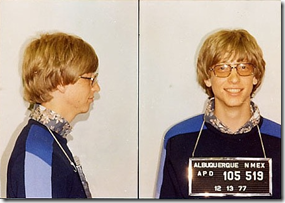 Let me start by saying, I’m not sure whether I am for or against the prominent use of mugshots in the media. On one hand I think public shame and humility for your crime seems like it could be an acceptable deterrent for a community. On the other hand, see the world through our predetermined perceptions and we might only reinforce our stereotypes. So, long story short, the verdict is still out as to how I feel about mugshots in general. That said, let me move on to my topic.
Let me start by saying, I’m not sure whether I am for or against the prominent use of mugshots in the media. On one hand I think public shame and humility for your crime seems like it could be an acceptable deterrent for a community. On the other hand, see the world through our predetermined perceptions and we might only reinforce our stereotypes. So, long story short, the verdict is still out as to how I feel about mugshots in general. That said, let me move on to my topic.
I read the Star Tribune in my reader every morning. Mostly I browse headlines and scan pages, but I’ll read whole articles when I think it’s relevant. I’ve been doing this for the past year, so I feel this insight is at least partially backed by a decent research sampling of the Star Tribune’s online articles. Here’s my observation: The Strib tends to print mug shots of street crime criminals that fit the archetypal “Black Male”, at least that seems to be what I have seen. And then there is the mug shots that the Strib doesn’t print (In fact, it seems rare any news outlet does). The rather anonymous ones are the corporate criminals. The white collar men and women who’ve stolen and spent millions of dollars in tax fraud and real estate scams. The ones whose crimes have affected hundreds and caused the sort of instability in our economy we are currently facing. For Example, Jon Helgason and Tom Balko of TJ Waconia, who plead guilty almost a year ago to a $35 million dollar housing fraud scheme in my neighborhood. What’s crazy is that they haven’t even been sentenced yet, they are still walking the streets as free men, and the Star Tribune has yet to post a picture of either of the two men. In fact, a Google search brings up any photos of either of these men on any news site. Why is that?
I’ll cut to the chase, whether intentional or not, the Star Tribunes use of photos of criminals seems to clearly be unequal. In Strib articles, Street criminals (often African American Males) tend to have photos posted with the article, while white collar crime (often White Males) tends not to. It goes without saying that we are a visual people, and while facts and stories slip in and out of our memories, those images will stick in our minds. It’s a great disservice to us as a community and an injustice to us as a people that we continue to reinforce incorrect stereotypes and ideas of what crime is and what we should be afraid of.
I’ve pointed out before that it is corporate crime, not street crime that really wrecks havoc on our lives and nation, but when we continue to publish media the way we do that fact won’t really sink in.
Here’s a brief overview of stories from the past year that were covered in the Star Tribune, without photos.
- TJ Waconia trial– As I mentioned it’s been over a year since they plead guilty (the case has been around even longer), which is plenty of time to get at least a photo. The Star Tribune has published multiple stories on this case and has never included a picture. My own councilman, Don Samuels, whose 5th ward was particularly affected by the crime, has never seen a picture of what these guys look like (and he’s asked).
- Tom Petters– This was the biggest corporate crime story of the year in Minnesota. Tons of articles published on Petters, and since even his arrest was a public news story there were photos of him (including of his lavish, money spending lifestyle). There were many others involved in the scheme, but only one other photo that I saw.
- Robert Beale– A millionaire who was involved in church planting and running a successful medical device company, was sentenced to 11 years in prison for tax fraud. No picture that I could find on the Star Tribune (though a google search turns some up from other sites).
There are multiple others, in fact the Strib wrote a summary article about all the corporate crime in 2008, of course without photos. Oddly, the only other corporate crime article I ran across that had a photo displayed, besides Petters, was of Carolyn Louper-Morris who defrauded the state out of $2 million through a fledgling tutoring company. What’s odd about it? Of all the corporate criminals they could choose from to publish a picture of they pick Louper, an African American women. How do you interpret that.
And just as a final quick contrast (sorry this has gotten quite long), here are a couple articles that address the very downfalls of what I’m talking about.
- Valleyfair Beating– the Star Tribune and others posted photos of eight black male suspects in this crime. Outrage ensued with blogs, news sites (including the Tribune) and local talk radio lighting up with claims of this being a hate crime. It wasn’t till later that it was made clear the victims were also black.
- Ali Abdilahi – was a suspect in an abduction case and his mugshot was plastered on TV and elsewhere. Though the charges were dropped Abdilahi lost jobs, his vehicle, thousands of dollars raised by friends and family for bail, and a difficult and frustrating few months afterward.
- Publicizing mugshots of ‘Johns’ – I think prostitution and the men who perpetuate it is wrong. So, reading about this effort by the city to use a billboard to encourage people to view the photos of those charged for soliciting prostitutes seems like a strategic deterrent to the crime. But where are the public dollars to make corporate criminals publicly shamed as well?*
In conclusion, my point is simply this: if we are going to use public photos of criminals, do it consistently. Don’t simply reinforce the stereotypes that have been so ingrained. And if your reading or watching your local news, keep a critical eye on bias in the media. It’s there.
*aside: a brief look at the website they’ve posted shows 22 arrests made in the last six months, but they all occurred on only three different days. If the city really wants to crack down on crime I suggest they keep their eyes out for ‘Johns’ all 182 days of the next six months, not just three of them.



 This new film strikes me as an incredibly interesting and informative story that we should all hear. We are part of a society that I’ll admit has a pretty fair justice system. There are many disturbing exceptions to this, but overall I think even I would have to agree it’s pretty fair. I think it is precisely because of this that we should be so aware and concerned about injustice, mistakes, wrongdoings in it.
This new film strikes me as an incredibly interesting and informative story that we should all hear. We are part of a society that I’ll admit has a pretty fair justice system. There are many disturbing exceptions to this, but overall I think even I would have to agree it’s pretty fair. I think it is precisely because of this that we should be so aware and concerned about injustice, mistakes, wrongdoings in it.